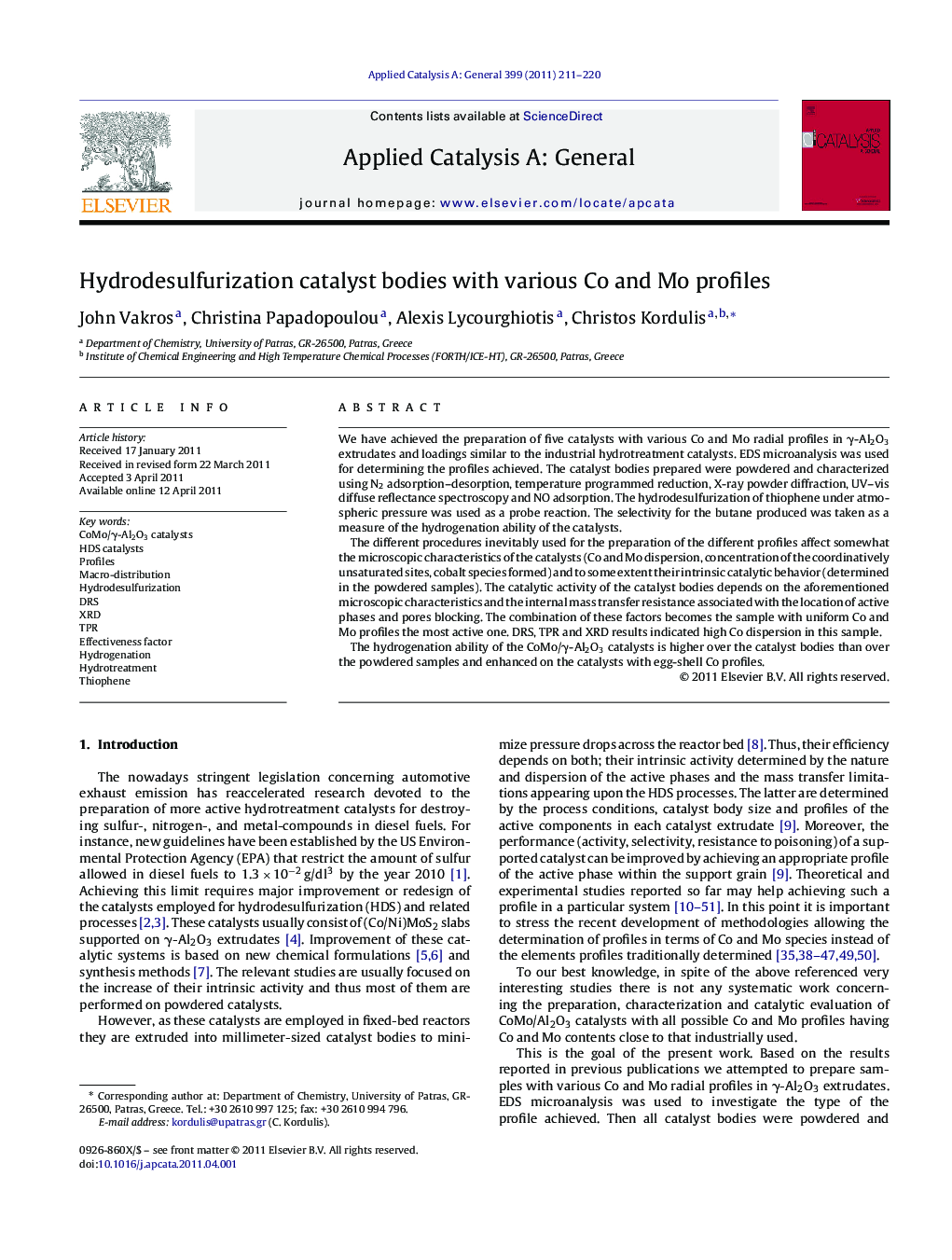| کد مقاله | کد نشریه | سال انتشار | مقاله انگلیسی | نسخه تمام متن |
|---|---|---|---|---|
| 41448 | 45889 | 2011 | 10 صفحه PDF | دانلود رایگان |

We have achieved the preparation of five catalysts with various Co and Mo radial profiles in γ-Al2O3 extrudates and loadings similar to the industrial hydrotreatment catalysts. EDS microanalysis was used for determining the profiles achieved. The catalyst bodies prepared were powdered and characterized using N2 adsorption–desorption, temperature programmed reduction, X-ray powder diffraction, UV–vis diffuse reflectance spectroscopy and NO adsorption. The hydrodesulfurization of thiophene under atmospheric pressure was used as a probe reaction. The selectivity for the butane produced was taken as a measure of the hydrogenation ability of the catalysts.The different procedures inevitably used for the preparation of the different profiles affect somewhat the microscopic characteristics of the catalysts (Co and Mo dispersion, concentration of the coordinatively unsaturated sites, cobalt species formed) and to some extent their intrinsic catalytic behavior (determined in the powdered samples). The catalytic activity of the catalyst bodies depends on the aforementioned microscopic characteristics and the internal mass transfer resistance associated with the location of active phases and pores blocking. The combination of these factors becomes the sample with uniform Co and Mo profiles the most active one. DRS, TPR and XRD results indicated high Co dispersion in this sample.The hydrogenation ability of the CoMo/γ-Al2O3 catalysts is higher over the catalyst bodies than over the powdered samples and enhanced on the catalysts with egg-shell Co profiles.
Figure optionsDownload high-quality image (228 K)Download as PowerPoint slideHighlights
► Five HDS catalysts with various Co and Mo radial profiles and industrial loading have been developed.
► The catalytic behavior of these catalysts depends on their micro/macro-characteristics.
► The CoMo/γ-Al2O3 extrudates with uniform Co and Mo profiles are proved to be the most active for thiophene hydrodesulfurization.
► Egg-shell Co profiles favour the hydrogenation ability of these catalysts.
Journal: Applied Catalysis A: General - Volume 399, Issues 1–2, 31 May 2011, Pages 211–220